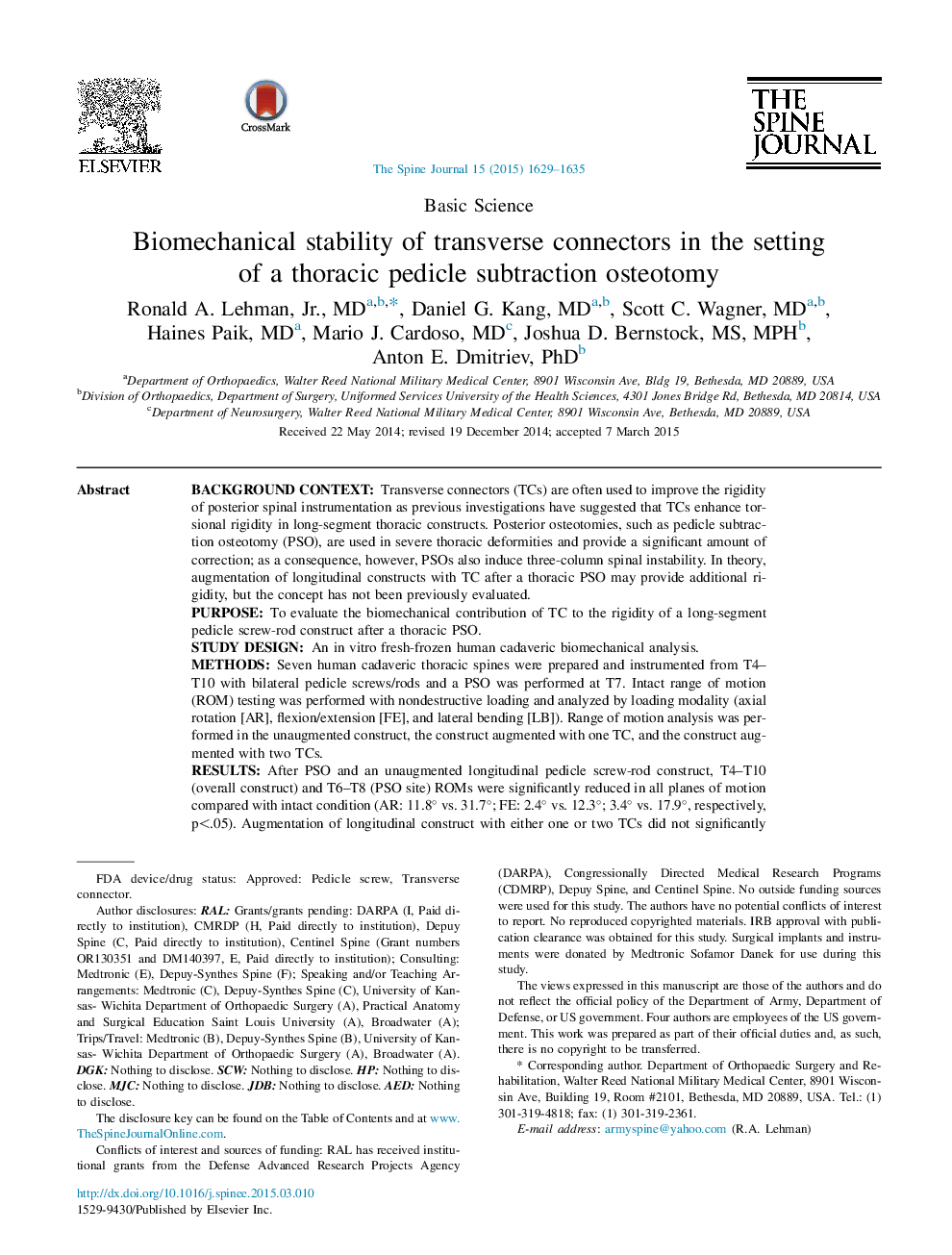| Article ID | Journal | Published Year | Pages | File Type |
|---|---|---|---|---|
| 4096077 | The Spine Journal | 2015 | 7 Pages |
Background contextTransverse connectors (TCs) are often used to improve the rigidity of posterior spinal instrumentation as previous investigations have suggested that TCs enhance torsional rigidity in long-segment thoracic constructs. Posterior osteotomies, such as pedicle subtraction osteotomy (PSO), are used in severe thoracic deformities and provide a significant amount of correction; as a consequence, however, PSOs also induce three-column spinal instability. In theory, augmentation of longitudinal constructs with TC after a thoracic PSO may provide additional rigidity, but the concept has not been previously evaluated.PurposeTo evaluate the biomechanical contribution of TC to the rigidity of a long-segment pedicle screw-rod construct after a thoracic PSO.Study designAn in vitro fresh-frozen human cadaveric biomechanical analysis.MethodsSeven human cadaveric thoracic spines were prepared and instrumented from T4–T10 with bilateral pedicle screws/rods and a PSO was performed at T7. Intact range of motion (ROM) testing was performed with nondestructive loading and analyzed by loading modality (axial rotation [AR], flexion/extension [FE], and lateral bending [LB]). Range of motion analysis was performed in the unaugmented construct, the construct augmented with one TC, and the construct augmented with two TCs.ResultsAfter PSO and an unaugmented longitudinal pedicle screw-rod construct, T4–T10 (overall construct) and T6–T8 (PSO site) ROMs were significantly reduced in all planes of motion compared with intact condition (AR: 11.8° vs. 31.7°; FE: 2.4° vs. 12.3°; 3.4° vs. 17.9°, respectively, p<.05). Augmentation of longitudinal construct with either one or two TCs did not significantly increase construct rigidity in FE or LB compared with the unaugmented construct (p>.05). In contrast, during AR, global ROM was significantly reduced by 43% and 48% at T6–T8 (1.7° and 1.2° vs. 2.38°, respectively) after addition of one and two TCs (p<.05), respectively. One TC did not significantly reduce torsional ROM from the intact state.ConclusionsTwo TCs significantly improved torsional rigidity of the entire construct and at the PSO site, with no differences in rigidity for FE and LB or with the addition of only one TC. In the setting of a PSO and long-segment pedicle screw-rod construct, augmentation with at least two TCs should be considered to improve torsional rigidity.
